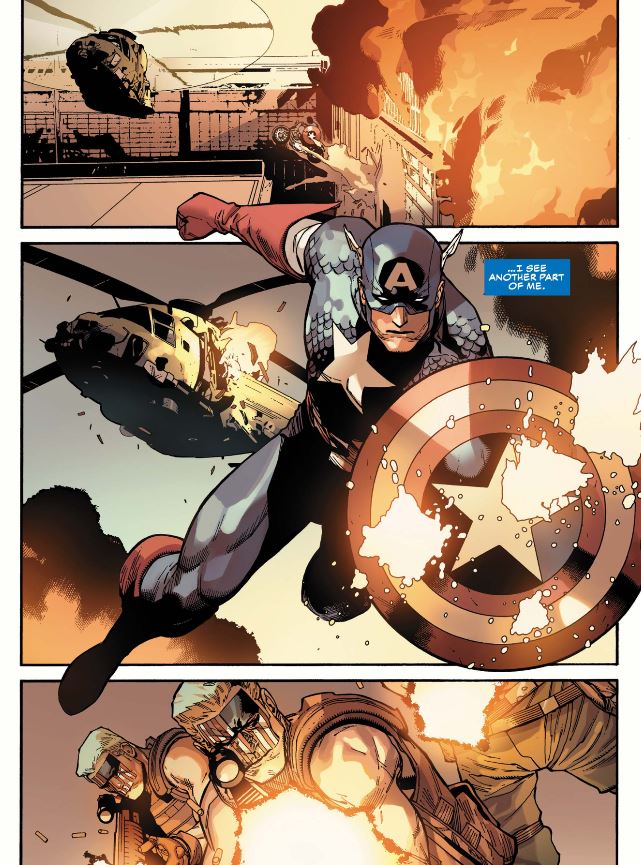
Unlike the take-it-for-granted introduction of Cap to moviegoing audiences in 2011, the comics creators working on the monthly book over the decades knew that the concept of Captain America had increasingly become a hard sell. A superhero wearing a national flag screams nationalism, and yet Cap’s enemies—including his worst pretenders—are nationalists and ethno-fascists. He fights for “the American Dream,” and yet the last great run to seriously tout that idea without explicitly critiquing its foundations was Mark Waid’s in the late ’90s (although he does criticize how inaccessible it was becoming, leaving out a more honest look at American history until his superb Man Out of Time mini over a decade later).
In the 21st century, both concepts must struggle mightily for relevance.
From 1940 to 1946 and then from 1964 to today, Captain America has been Steve Rogers—excepting several brief but notable gaps. Steve’s struggle as a time-displaced individual and symbol grappling with modernity is the raison d’être for the character, the heart of his quiddity. The inner drama was handled poorly by Silver Age creators—yes, including Jack Kirby, king of epics, not psyches. The symbolic tensions, however, are undeniably there from the start, even in the Golden Age if you take the time to look at it (like Michael Chabon did in the classic American novel The Adventures of Kavalier & Clay, 2000).
So, before getting started on the 10 best Cap stories or runs of all time, it’s worth considering here that—excepting some alternate-reality versions—Captain America has always been a white man, except for Falcon’s brief tenure under the mantle—or in the shadow of it. And Nick Spencer’s depiction of Sam as Cap isn’t without serious problems; it was a watershed moment and only fitfully articulate on the serious subjects it sought to tackle. Moreover, the run was overshadowed by and dependent upon his failed two-year project on the Skull’s Cosmic Cube recreation of Steve Rogers as a fascist sleeper agent from early childhood.
Support For Comic Book Herald:
Comic Book Herald is reader-supported. When you buy through links on our site, we may earn a qualifying affiliate commission.
Comic Book Herald’s reading orders and guides are also made possible by My Marvelous Year club support on Patreon, and generous reader donations.
Any size contribution will help keep CBH alive and full of new comics guides and content. Support CBH’s My Marvelous Year on Patreon for exclusive rewards, or Donate here! Thank you for reading!
The silver lining is that it ultimately landed Cap in the hands of not only the first African-American writer on the book but also a timely and vital novelist, essayist, and public intellectual—that rarest of phenomena throughout America’s history and a role largely filled in the US by minorities, when pursued with integrity.
Speaking of which: Honorable mention 1: Truth: Red, White & Black (which is out of print in trade, bizarrely). It chronicles the origins of the super-soldier serum, calling back to actual science experiments by white doctors on black men, beginning with the Golden Generation, many of whom fought and died far from home for the world’s freedom from fascists. (Story by Robert Morales.)
And still, the possibility of a female Cap, a queer Cap, an Asian Cap—all of these and more should feel inevitable.
Man Out of Time
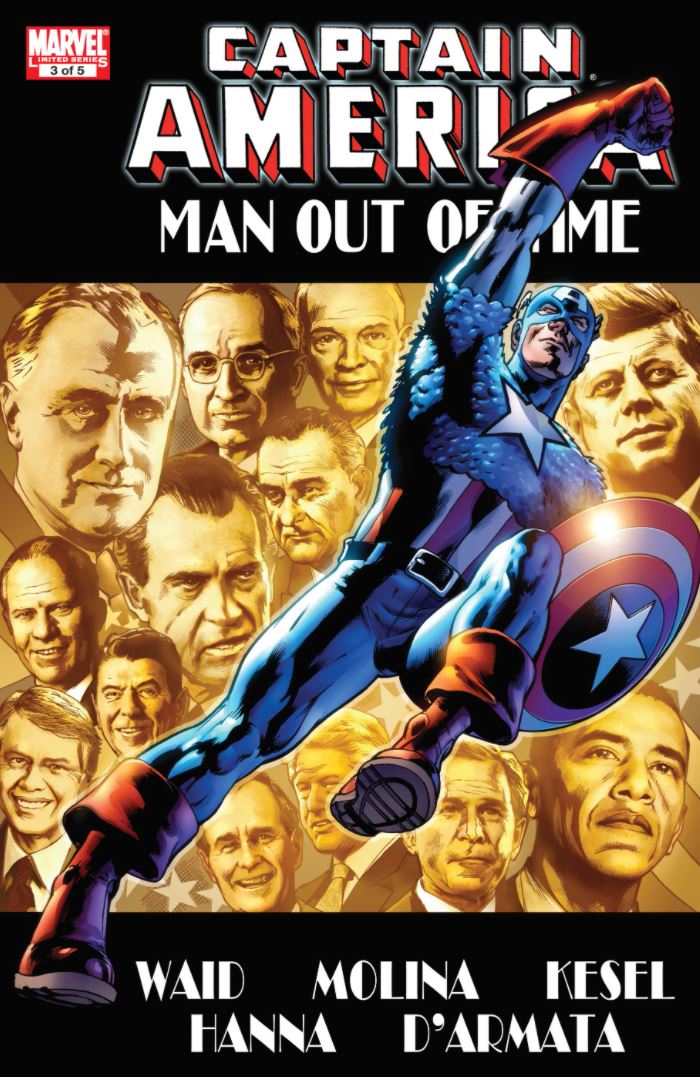
After realizing an ingenious method to get back to where he really belongs now—helping his new teammates in their dire battle against Kang—Cap returns in time to help forge the Avengers into “a tight-knit unit.” Adjusting to the modern era, he makes time for himself, hiking in the desert, reflecting on and letting go of the past—as he soldiers on with stoic acceptance.
While Waid’s social commentary is by turns devastating and clumsy, this master of Marvel continuity impeccably interleaves the exploration of Steve’s interiority with the backdrop of his classic early battles alongside the Avengers.
Honorable mention 2: No Longer Alone by Jim Steranko, 1969.
Hero or Hoax?

I can’t overstate how important this story is to Cap’s mythos moving forward, seeding future variations on the theme of Cap’s legacy and identity. It was the first time another person was identified behind the mantle, which becomes a device to show the kind of mature, even-keeled temperament required to take it on responsibly (think Spidey!). Englehart, Marvel’s most explicitly political writer at the time, used the title to dynamically deconstruct the dark side of patriotism and other forms of chauvinism—which isn’t to say that he fully addressed America’s worst social ills. But modern readers will find much to grapple with. (Caveat: #153’s opening pages involve Englehart wrapping up a previous author’s subplot, with Nick Fury acting like a melodramatic 1950s teenager paranoid over “his girl’s” loyalty. Ick.)
Honorable mention 3: Madbomb by Jack Kirby, 1976
Stern/Byrne
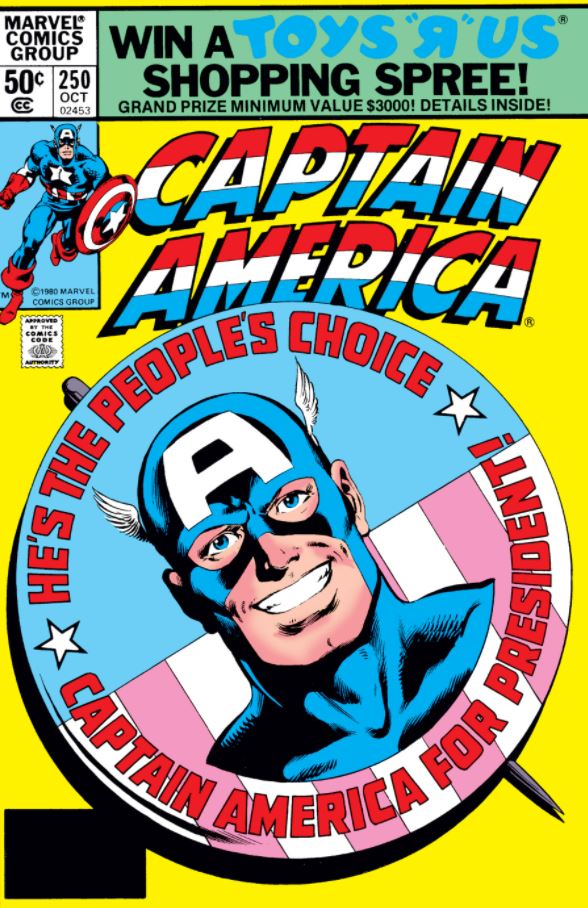
Their best issue is #250, “Cap for President!” It’s not nearly as substantive as later writing on the politics of Cap’s legacy, but it was the character’s first encounter in the spotlight of campaign politics. Unsurprisingly, Cap makes the wise decision and steers clear of party-centric partisanship, arguing that he represents and fights for “the American Dream”—a more grassroots approach, let’s say? Well, that’s the one major flaw of the Stern/Byrne run: They don’t even attempt to deal with the systemic inaccessibility of this ideal, to say nothing of its history and contradictions, much less the problem of simply entering “Captain America” on the ballot. But it’s all in good-natured fun for the kids! It’s success, and it’s shortcoming.
Early depictions of Steve’s pre-Cap background are found in issues #247, 250, and 255, while details on Cap’s time with the Invaders is backgrounded in #253-254, which is interesting because while readers knew about this period in detail Cap hadn’t until the recent return of his memories. (Caveat: On the last page of #254, there’s a weird sort of loving eulogy for the glory days of the British Empire. Ack!)
Monsters and Men
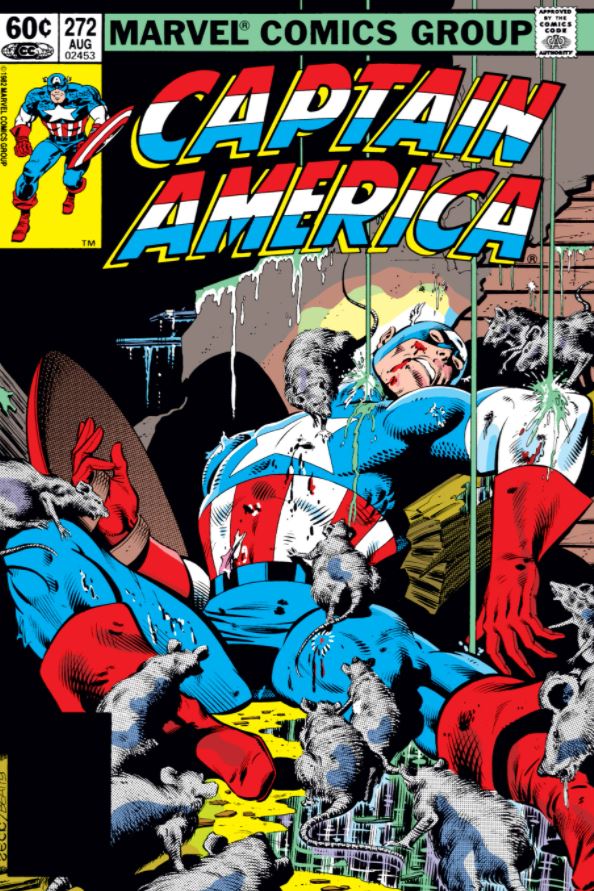
The first half of JMD’s run is drawn by Mike Zeck, whose distinctive style does resonate somewhat with Byrne’s in its bold, clean lines—generally steering clear from aestheticizing urban hardship without avoiding its bleakness. The talented Paul Neary took over thereafter but didn’t find his footing until after the disaster of between JMD and editorial. His last arc was poorly wrapped up by a fill-in writer, but it would have been the springboard Cap’s epic deconstruction of superheroics and celebration of pacifism, as well as the first try at the famous question of Brubaker’s era: Who Will Wield the Shield? It would have been between Falcon and a new Native American character whose continued existence almost no one but JMD remembers. Still, what readers did see was the fascinating introduction of the Skull’s daughter Sin and the recently minted Baron Zemo depicted as weak-kneed before the senior Nazi’s nihilistic fascism.
The good-hearted JMD’s grappling with social issues is sometimes awkward, but it remains a real strength of the run, as does his further development of Steve’s private life. Bernie’s discovery that he’s really Cap results in a surprising but subtly portrayed moment of emotional vulnerability. The only regrettable error is the well-intended resolution to Sam’s brainwashing by the Red Skull and his Cosmic Cube years before; while Sam seems to free himself at last from the overexploited self-doubt over his true identity as good or bad (represented by the horribly cliched pimp Snap Wilson), the device that catalyzes this resolution is Sam’s campaign for Congress. I know JMD wouldn’t see it as setting up this early black superhero to fail spectacularly at his progressive, grassroots political campaign, but that’s what it feels like.
(Note: MCU Baron Zemo bears little resemblance to the Prussian son of the original Nazi Zemo responsible for Cap and Bucky’s end in fire and ice, 1945.)
Society of Serpents / Justice Is Served
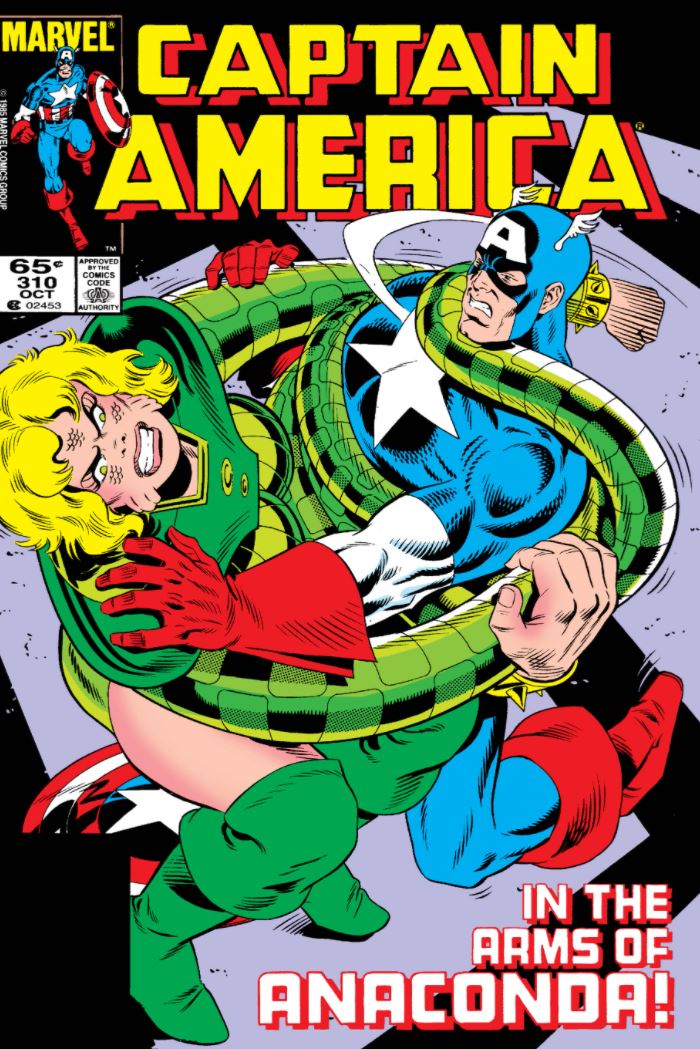
On the other hand, Gruenwald’s first two years on the title also saw Cap at his most impossibly idealized, even portrayed as a Boy-Scout champion of white bread and milk.
The Captain:
Caught Between Super-Patriots & Anti-Patriots: Watchdogs vs. John Walker vs. OG Cap vs. Flag-Smasher!
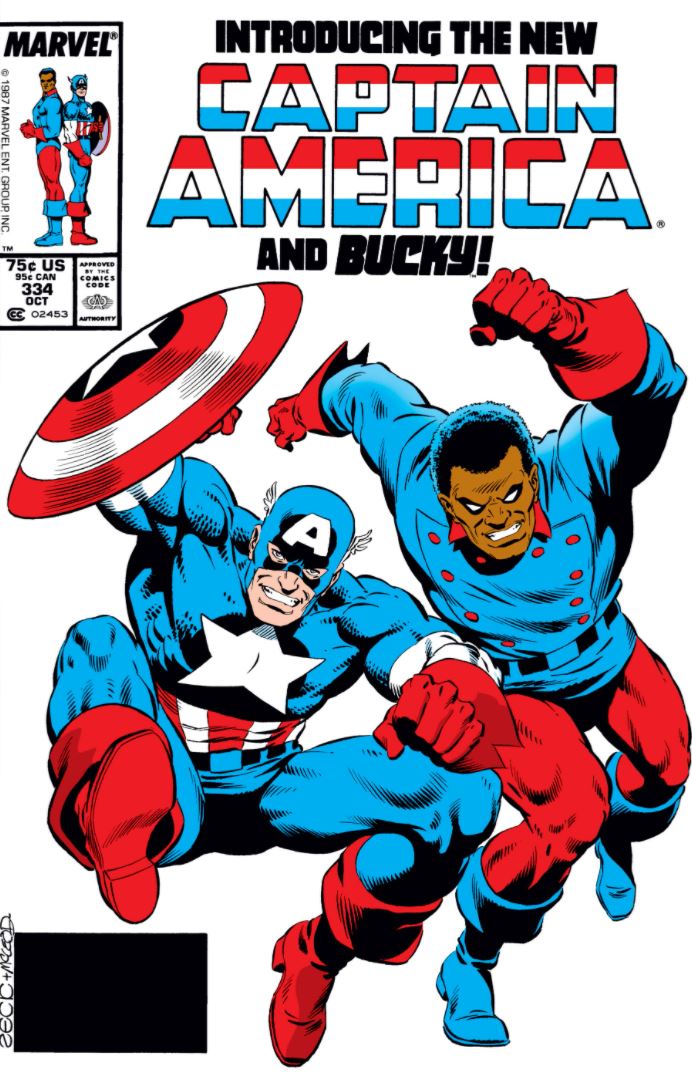
Since 1972, Cap had developed a rich psychology and ever-evolving set of beliefs. But Gruenwald regressed the terms of the debate with Flag-Smasher, whose antinationalism on its face should’ve felt as palatable during the Cold War as it does now. I think the appeal is supposed to be apparent, but the means are beyond silly; real-world critics of nationalism actually develop ideas for what could replace it. But at least Falcon & Winter Soldier is doing something more compelling with the source material!
What’s really great about these issues, though—also reflected in the current TV show—is the rise and fall of John Walker, who has quite a different origin and background than the MCU version. He’s a charismatic everyman, at first, very pompous and green-eared, foolishly presuming himself “old man” Cap’s superior. His hubris here carries the tale as Cap quits over the government attempting to “own” him and they turn to John, the showboating Super-Patriot, to pick up the mantle. So, for the second time in the modern comics an unworthy replacement steps in for a time to show us that only Steve, with his long-suffering experience and hard-won wisdom, is the man for the job. (That said, these early stories of John Walker, the future U.S.Agent, are fascinating. Unsurprisingly, Lemar Hoskins hasn’t seen anything like equal development.)
American Nightmare/Plausible Deniability
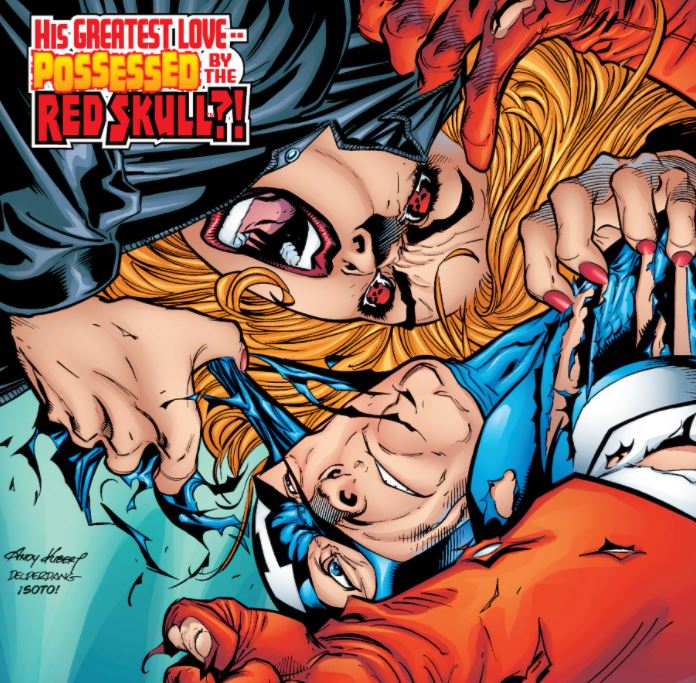
But the hopeful naivete of Waid’s Cap would soon become impossible, in the age of the War on Terror. It’s so glaring in part because there’s little focus on developing a supporting cast—except very superficially but savvily enough with the Ramirez family—so the run clearly hearkens back to making the title a vehicle of ideas and ideals. Complicating this idealism and most surprisingly never resolving it, #13 is the strongest single issue for its portrayal of Cap colliding with party politics corrupted by the usual special interests—and A.I.M. too!
Caveat: Revealed to be alive at the start of Waid’s run, Sharon hints at the sordid and degrading details of her years-long absence, but it’s never explored at all, not even the emotional toll it must’ve taken on her. This is the biggest unforced error of his time on the book (#444-454; vol.3 #1-19). She’s now hardened and cynical, most strongly depicted in her reaction to Cap’s defense of “the American dream.” It’s almost as if she represents the extreme ’90s antihero. But there’s an anxious undercurrent to this subtext that now feels like a prescient cultural moment.
(The trade collecting this middle part of Waid’s run includes 1998’s Iron Man & Captain America Annual, and it reads like that light as air but sophisticated Saturday morning cartoon, a subgenre vibe perfected by writers Kurt Busiek, Rogert Stern, and Mark Waid. And yet it manages to highlight the moral contrast between its titular heroes in illuminating ways, a harbinger of the next decade.)
Winter Soldier
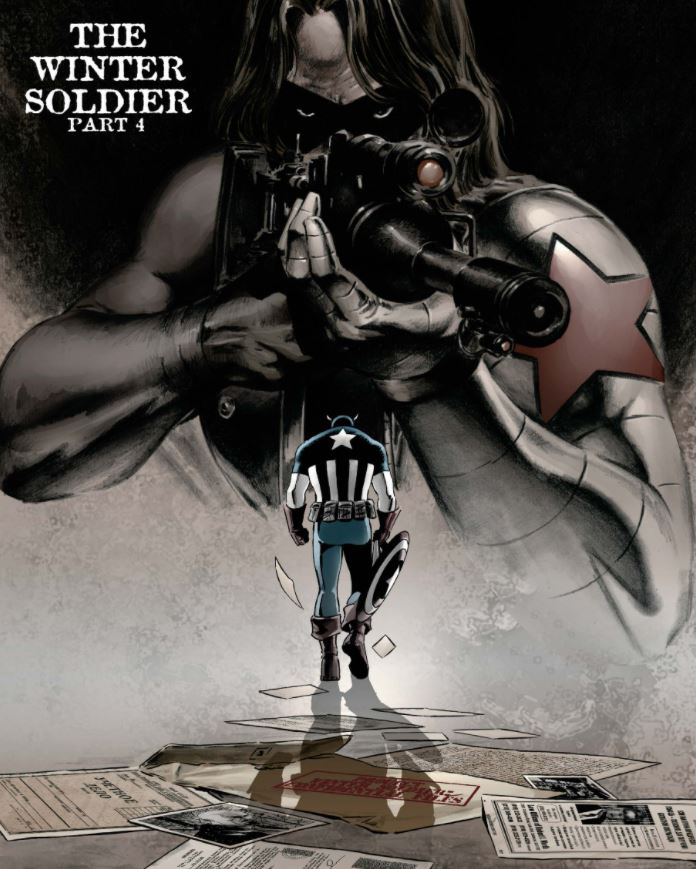
Almost wholly penciled by the similar but distinct neo-noir stylings of Steve Epting and Scott Eaton, the run has an extraordinary cohesiveness considering it lasted the better part of a decade. Even Bryan Hitch’s work on the integral Captain America: Reborn mini fits perfectly—the symphonic crescendo of the Brubaker era.
This is my favorite Cap run, and it might be Ta-Nehisi Coates’ too, because he and Andy Kubert draw a lot from this era—in wholly original ways, and with much greater societal and political insight.
The long, opening “Winter Soldier” arc was never quite matched by the rest of Brubaker’s run, but you really should just read it straight through. I don’t like how much the word epic is tossed around, but that’s what this era of Cap ultimately is. It’ll be nigh-impossible to top!
Honorable mention 4: Marvels Project by Ed Brubaker—the Golden Age of comics never looked so grey and gritty. A hard-hitting piece of super-science WWII history that retells Marvel’s origins.
Sam Wilson: Captain America
Would a black superhero really see 2015 as America at its most divided? Is it sensible to focus on privatized “Americops” at the expense of a real examination of America’s police state as it already exists? And what about having Sam take up the mantle while knowing he’d be sabotaged throughout by Hydra Cap and that it would be insultingly short-lived? After all, it’s never ended well for previous “pretenders” or “substitutes.” There was also a structural problem with Nick Spencer’s Sam Wilson: Captain America (2015-2017): Marvel was so saturated with company-wide events at this point that the two-year series embroiled itself deeply with the three of them, each one more dragged-out and enervating than the last. Steve’s ongoing title never had to deal with so much outside interference. Was even this a subtextual point from Spencer? Did he just want to show that Sam wouldn’t a fair chance—by not giving him one? Perhaps there’s a world where Marvel let the architect of Secret Empire fully carry through with the convictions that seemed to be roiling up through the euphemistic superhero tropes over the previous two years, but this is what happened instead: Sam gave up the shield to Marvel’s “true Cap” and then faded back to obscurity.
But for all its flaws, this brief run was a pivotal moment: There had finally been a Captain America of color. (A statement that encapsulates an unfortunately inevitable brevity.) The first eight issues were awkward: Following his announcement of a Cap hotline—echoing the start of Gruenwald’s run—Sam was inundated with political and racial hatred; and yet readers never actually saw what specific stances he took in public (beyond protecting immigrants after the furor had already started); then, he turned into a werewolf and ended up appeasing a villainous corporation “too big to fail.” Next, it was gonzo event time: the intriguing but poorly executed Pleasant Hill event, which saw Steve Rogers secretly and retroactively replaced with Hydra’s supreme sleeper agent, courtesy the Red Skull’s Cosmic Cube, which thought of itself as a little girl. It was a weird time. Though to be fair, not just in the comics.
Best of the series by far is issue #10: the funeral of Jim Rhodes, War Machine and before that Iron Man, two armored identities that offer up their own kind of racialized contrast. But the main event is Sam’s speech on Rhodey’s career, which so clearly echoed his, stepping into a white man’s shadow rather than being a spotlight unto himself. But then, that’s a critique of the standard notion of heroism generally: Why’s autonomy valorized when being heroic is about helping others? Sam doesn’t just represent abstract ideals—that was what Steve’s always done, even as Hydra Supreme. In his public identities, Sam potentially represents a community of communities across the nation. But that groundedness is consistently sabotaged by the author, and it’s not really a focus until the Falcon run by TV veteran Rodney Barnes, which was canceled. So, while Spencer offers up his signature continuity-made-fun storytelling, when it comes to addressing reality he weirdly falls on his face and “both-sides” every important issue into a nebulous mess. There are problems at the heart of Sam Wilson: Captain America that still haven’t found a clear and direct telling at Marvel Comics. Until that happens, what’s here—a tormented but ultimately milquetoast appeasement to the frail shrillness of white supremacy on Twitter—couldn’t be more relevant to how mainstream America, that fitfully evolving behemoth, continues to tell itself stories of truth and power.
Winter in America/Captain of Nothing
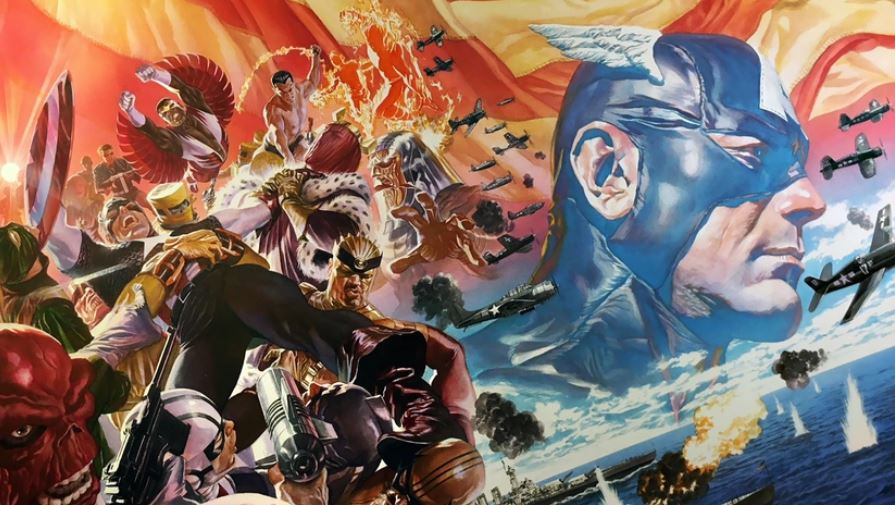
The conceit is obvious: Steve must rectify his reputation even as much of white America continues to believe in and regret the loss of Hydra Cap. It also begins with the widow of the Red Skull’s previous host, Ed Brubaker’s Aleksander Lukin, back to life and setting her up as the Ice Queen to his Macbeth. This couldn’t be more perfect for our own time: Old guard Russians getting in bed with their historic worst foes, the fascists, to usher along the inner rot of their shared geopolitical enemy, ultimately unleashing the Skull as a charismatic white men’s rights Internet troll. There’s also the refreshing development of an ensemble supporting cast that’s primarily female, under the nom de guerre The Daughters of Liberty. Initially, Steve is on the run, framed for the political murder of a representative of America’s most corrupt administration, and these heroines named for early American freedom fighters are crucial in rescuing Captain America from a supermax prison overseen by the execrable Social Darwinist Baron Strucker.
Early on, Ta-Nehisi frankly addresses one of the most uncomfortable truths about the appeal of Hydra Cap without making the obvious parallel that I will: Under Hydra, white working-class America benefited from housing, food, and jobs, Hydra’s way of justifying their coup against democracy. That’s exactly how organizations like Al-Qaeda and the Islamic State make inroads. But it’s also how white supremacy has always worked: Powerful interests give just enough to those whose skin is the same color so that they fight to hold on to what’s actually a pitifully meager portion of the pie by directing their rage and violence against poor folk of color, as if it’s the fault of minorities that they have so little—not the 1% toying with our lives as distraction from who really owns us.
Ta-Nehisi Coates has added an exciting, powerful, critical chapter to our mythography of superheroism, and it will be a tough but necessary act to follow.
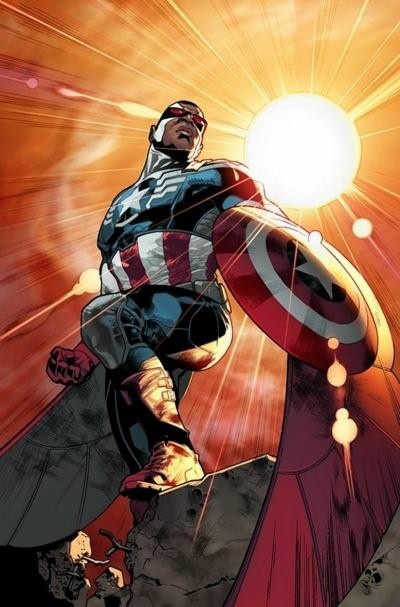
This has to be the FIRST review of Coates run that wasn’t slathered in the same misguided hate that Coates covered. No one ever brakes down why they don’t like the run, beyond mentioning some Jordan dude.
Thank you for actually giving a nuanced perspective
I appreciate that, Derek. I’ve also got a recent in-depth piece here on the entirety of Coates’ run–spoilers abound. https://www.comicbookherald.com/ta-nehisi-coates-captain-america-retrospective-review/ You’ll see some mention of that Jordan weirdo, who I’d never have researched if not for this assignment–only to realize it was totally unnecessary! Even though Peterson seems to think he’s a beacon of civilization on the brink; freaky–but a few from now, he’ll be in the dustbin. Coates on the other hand is just getting started
To be honest, I don’t understand the “list all negatives of a book” thing in the first paragraph of each entry. I was confused several times if I was even reading a “Best Of” list.
Have you seen The Falcon and The Winter Soldier? The approach here is fully in line with the show and seems completely appropriate to me.